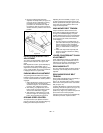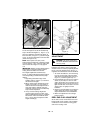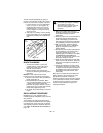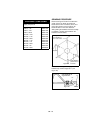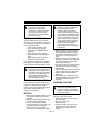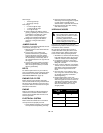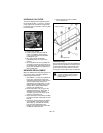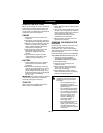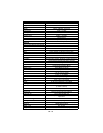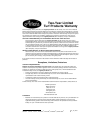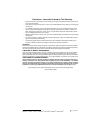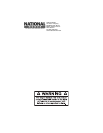
GB - 26
GENERAL INSTRUCTIONS
When you do not plan to use your vehicle for
some time, it should be stored in a dry and
protected place. Unnecessary exposure to
the elements may deteriorate its appearance
and shorten the usual service life.
ENGINE
1. Drain the fuel from the fuel tank and
carburetor.
2. Operate the engine until the gasoline in
the carburetor is completely consumed.
3. While the engine is still warm, drain the
oil form the crankcase and refill with
fresh oil. Refer to Engine Manual for
manufacturer’s instructions.
4. After engine has cooled, remove the
spark plugs and put about one
tablespoon of SAE 30 oil into the
cylinder.
5. Clean exterior of engine. Paint the
exposed metal or coat it with a light
coating of rust preventative oil.
BATTERY
1. Remove battery and clean it. Refer to
manufacturer’s manual for specific
instructions.
2. Maintenance-free batteries should be
stored in an upright position in a cool dry
place. Storage above 80° F (28 °C)
greatly increases self-discharge. If wet
batteries are discharged, the electrolyte
will freeze when stored below
20° F (-7 °C).
IMPORTANT: The battery should be checked
every 60 to 90 days while in storage and
should be recharged if necessary.
TRACTOR
Wash, clean and completely lubricate the
tractor. Paint any exposed metal.
TIRES
1. Before storing the vehicle, clean the tires
thoroughly.
2. Jack up the vehicle so that the load is off
the tires. If it is not jacked up, check the
tires at regular intervals and re-inflate as
necessary to keep them at the
recommended maximum pressure
(Indicated on tire’s side wall).
3. Store the vehicle so that the tires are
protected from sunlight.
STARTING THE ENGINE AFTER
STORAGE
If mower is cold, move the mower to a heat
location and allow it to come to room
temperature (70°F - 22°C) before starting.
This will prevent premature wear of hydraulic
system components.
Follow the towing procedure (see PUSHING
OR TOWING INSTRUCTIONS on page 12).
1. Check and recharge the battery
according to recommendations (see
CHARGING A BATTERY on page 21).
2. Reinstall the battery
3. Check oil level in crankcase and
hydraulic oil tank.
4. Fill the fuel tank with fresh gasoline.
Check fuel filter. Check fuel shut off
valve; open if necessary.
5. Before driving the vehicle, check to
make certain that the tires are properly
inflated to the proper pressure.
STORAGE
CAUTION: Avoid injury! Explosive
separation of tire and rim parts is
possible when they are serviced
incorrectly:
• Do not attempt to mount a
tire without the proper
equipment and experience to
perform the job.
• Do not inflate the tires above
the recommended pressure.
• Do not weld or heat a wheel
and tire assembly. Heat can
cause an increase in air
pressure resulting in an
explosion. Welding can
structurally weaken or
deform the wheel.
• Do not stand in front or over
the tire assembly when
inflating. Use a clip-on chuck
and extension hose long
enough to allow you to stand
to one side.



